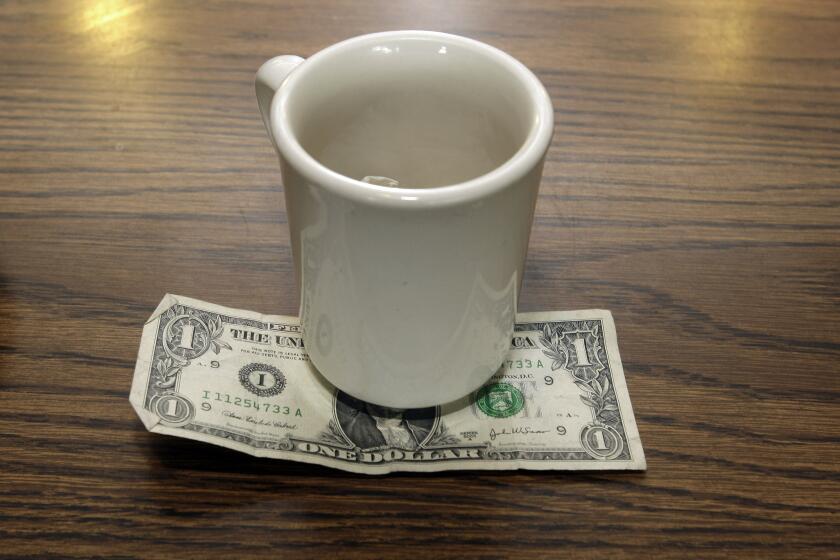Proper Technique Helps Turn Task of Frosting Into a Piece of Cake
Previous “Back to Basics” columns have explained the techniques for mixing and baking shortened cakes. This final series shows how to frost the cooled cake layers.
The word frosting has come to be used interchangeably for all types of cake decoration. By the strictest definition, however, frostings are sweet mixtures that are thick enough to spread in a thin layer but that still hold their shape or texture. Icings are thinner and shinier than frostings yet are still capable of holding a shape. Glazes are more liquid and are poured or brushed over a cake.
There are countless ways to decorate cakes, but the typical American layer cake has a rounded top and a simple, complementary frosting. This covering not only adds eye appeal and flavor to shortened cakes, it also provides a protective coating that helps maintain the cake’s moistness.
Before You Start
Before beginning to frost the cake layers, trim away any ragged edges with a pair of scissors. If the top or sides are uneven, they also may be trimmed.
Loose crumbs should be brushed away so they don’t get mixed into the frosting. (If the surface is still rough, it may be coated with a very thin layer of frosting that has been diluted with milk. This layer should be allowed to dry about 10 minutes at room temperature or be chilled.)
Place the bottom cake layer upside down in the center of a pedestal or serving plate. Slip overlapping strips of foil, wax paper or parchment, about three inches wide, under the edges of the cake (Step 1) to protect the plate.
Spoon one-quarter to one-third of the frosting onto this layer (Step 2) and smooth to the edges with a spatula (Step 3). Pushing the frosting, rather than pulling or dragging it, with the spatula prevents pulling up crumbs.
Flexible, narrow stainless-steel pastry (or icing) spatulas are available in a variety of lengths. Choose the size most comfortable for you to work with.
Position the top layer over the bottom, right-side up (Step 4), so the two flat sides face together. The sides of the cake, of course, should be straight and even.
Spread frosting around the sides of the cake (Step 5), beginning at the lower edge and pushing it up toward the top. Spoon the remainder of the frosting onto the top and either smooth it or leave it textured or swirled (Step 6).
After the frosting has set, carefully remove the foil strips by gently lifting the cake with a small pastry spatula. The result should be a neat cake and clean plate.
Suggestions for column topics may be sent to Back to Basics, Food Section, The Times, Times Mirror Square, Los Angeles 90053.
More to Read
Eat your way across L.A.
Get our weekly Tasting Notes newsletter for reviews, news and more.
You may occasionally receive promotional content from the Los Angeles Times.










